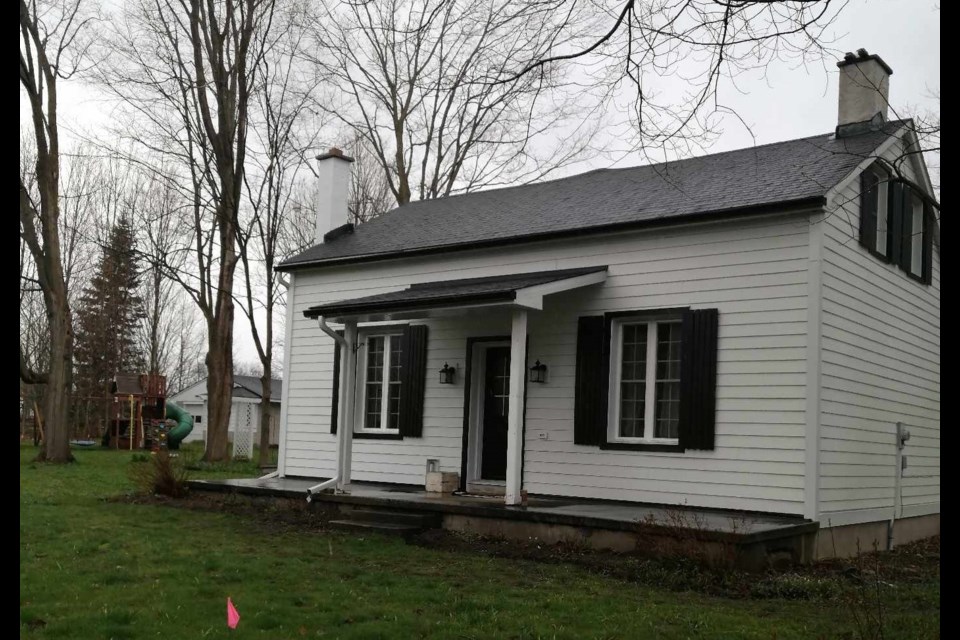Part 1 of this column can be found here.
There is a saying, attributed to the late actor Wilford Brimley, which applies here, I believe.
“What I know about poker, you can fit into a thimble and still have room left over, but I’m learning.”
Replace poker with Caston houses, and you have an idea of where I am in my education about these historic homes.
Everything that I know about Aaron Caston’s work comes from Paul Marshall. Paul has gathered quite a bit about these dwellings, while I am still at the novice stage, but we are both very keen to benefit from the knowledge of others.
At the beginning of our conversations about the homes built by Aaron Caston, I assured Paul that there are people in Barrie, and elsewhere in Simcoe County, who have something to share with us. There must be.
Some readers of this column may have grown up in a home which fits the Caston profile, or perhaps remember visiting an older relative in such a place. Others may have participated in renovation or restoration work on one of these houses.
Paul Marshall is dedicated to collecting the histories of these structures and to hearing the stories of the people who once lived within their walls.
Aaron Caston was born in 1798 in Suffolk, England. Records for that country describe him as a labourer, but his father was a carpenter so it can be imagined that Caston acquired some sort of building skills in his youth.
In 1824, Aaron Caston married Kezia Beard. Some time around 1831, Kezia passed away and left Aaron with a troupe of small children. Caston gathered the little ones, boarded a ship, and they all sailed away to Canada.
The Castons’ early 1830s arrival in our region is noted in Andrew Hunter’s informative book, A History of Simcoe County.
“Aaron Caston, a native of Suffolk, Eng., acquired, at this time, lot 40, adjoining Craighurst of the present day.”
With children to care for and a new life to build, Aaron Caston remarried. His second wife was Jane Huggins.
In 1844, Aaron Caston built a house for his ever-expanding family. Amazingly, that house still stands and is occupied today by members of the extended Caston family.
What else did Aaron Caston build? That is the question. Caston-built homes have a distinctive look and that look could be described as Gothic Revival. This style normally includes a steeply pitched roof, a front gable with or without a window, and a central front door between two windows.
Most of Caston’s homes were likely of the basic type, a simple plank home constructed quickly to house a family, an upgrade from the earlier log homes. Of course, extras such as a brick finish, decorative wooden trim, and additional living space could be arranged.
As Aaron Caston was building these homes in Simcoe County, other builders were doing the same throughout the province. This particular style became extremely popular in the middle years of the 19th century.
In Robert Mikel’s historical architecture book Ontario House Styles, a photo of a small brick house is shown and the caption reads: “If Ontario had an official house style, a Gothic cottage like this house would be it.”
Into this mix came the debut of George Brown’s new publication, Canada Farmer: A Fortnightly Journal of Agriculture, Horticulture and Rural Affairs, in 1864. The Nov. 15 issue of that year included plans, drawings and instructions on how precisely to construct such a home.
The floor plans surprised me. These seemingly minuscule houses could contain five bedrooms. The steep pitch of the roof allowed for plenty of sleeping quarters, ideal for the larger families of the time. A full two-storey house was subject to extra tax but these smaller dwellings avoided that.
Paul Marshall has photographed every suspected Caston-built house that he has come across in our region. Some of these are slated for demolition and others have been torn down since Paul’s camera documented their existence.
This project involves gathering the untold stories of these common but not necessarily noticed little houses. While not grand mansions, these structures are an important part of our local history too.
Let the readers’ comments roll in.
Each week, the Barrie Historical Archive provides BarrieToday readers with a glimpse of the city’s past. This unique column features photos and stories from years gone by and is sure to appeal to the historian in each of us.









